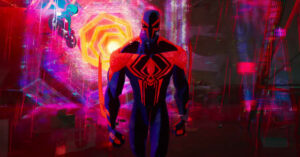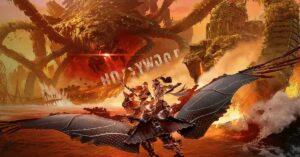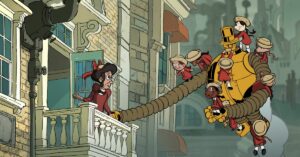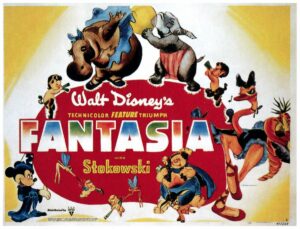Who is Sam Wilson? Despite six films worth of screen time in the Marvel universe, the hero known as “The Falcon” has always been something of an afterthought compared to the rest of Earth’s Mightiest Heroes. The humble veteran with an experimental flight suit dropped everything to become Steve Rogers’s right-hand man back in 2014’s Captain America: The Winter Soldier, only for his own story and arc to be situated at the periphery of the film’s action. Which is why the scene in Avengers: Endgame of Steve passing the mantle of Captain America, and his iconic vibranium shield, to Sam may have felt odd for those unfamiliar with the source material of the comics. The encounter is all the more so odd for how Sam himself feels ill-suited for the title. “[It feels] like it’s someone else’s,” he tells Steve, strapping the Shield’s leather grips against his arm, appearing dazed by the sight of it. Steve pauses for a beat before replying, “It isn’t.”
For those who expect heroes to heed the call and leap into action, that moment of hesitation could have been seen as a disqualification right off the bat. But what Captain America has himself established, and what The Falcon and the Winter Soldier is slowly explaining to Marvel fans, is a point that’s quite the contrary. That reluctance, that humility, is what makes Sam the perfect person to carry the shield of Captain America after Steve, and may in fact be the very quality for which Steve chose him as his successor.
The Steve Rogers of 2011’s Captain America: The First Avenger is far from the chiseled portrait of American exceptionalism one would expect from the so-called “First Avenger.” A scrawny orphan kid from Brooklyn who stubbornly persists in his attempts to enlist in the armed forces, Steve is nonetheless chosen by Dr. Abraham Erksine to train in the Strategic Scientific Reserve and eventually hand-picked to become the test subject for Erksine’s newly perfected Super Soldier Serum. “The serum amplifies everything that is inside, so good becomes great; bad becomes worse,” Erksine explains to Steve when asked why he was chosen on the eve of the serum procedure. “This is why you were chosen. Because a strong man who has known power all his life may lose respect for that power, but a weak man knows the value of strength … and knows compassion.” The scientist then asks his subject to promise him that, no matter what happens in the wake of the serum, that he will remain who he is at heart; “Not a perfect soldier,” Erksine says, “but a good man.”

Over the course of the Marvel films, Steve remains true to that promise. After being resuscitated from suspended animation, he joins SHIELD (the organization co-founded by his former lover Peggy Carter) and subsequently becomes a member of the Avengers. Steve’s life in the 21st century is one that, in spite of his almost herculean strength and unwavering heroic demeanor, is defined by loss. He lost time, having been resurrected in an uncanny world a lifetime away from his own; he lost the woman he loved, with Peggy now in the twilight of her life and only able to recognize him through brief fleeting moments of lucidity; he nearly lost his best friend twice, barely managing to pull him back from the brink of darkness after having served HYDRA as a brainwashed assassin for the better part of a century; and ultimately, he lost faith in SHIELD, the very institution for which he had pledged his service when the long festering corruption at its heart was laid bare. But he never lost faith in people, or his moral conviction. Until the very end of his time-traveling life, he remained at heart the same scrawny, fearless kid from Brooklyn getting his face beaten in by bullies time and again and nevertheless refusing to back down.
Steve’s strength of character, not his physical prowess, was what ultimately gave him the upper hand during the climax of 2019’s Avengers: Endgame. In a scene that would go on to be one of the film’s most memorable moments, Captain America lifts and wields Mjolnir, Thor’s mythical hammer, in battle against the Mad Titan Thanos. Introduced in 2011’s Thor, Mjolnir is to an extent the MCU’s equivalent to Excalibur, a legendary weapon that can only be wielded by the chosen few for whom it deems “worthy.” Driving the significance of the scene is Thor’s bemused expression of, “I knew it,” alluding to the scene in Avengers: Age of Ultron where Steve previously attempted — and seemingly failed — to lift Mjolnir. There are numerous theories as to why Steve might have not been able to lift it then, or even purposely chosen not to, but ultimately what audiences see in Avengers: Endgame is that the qualities which make Steve Rogers worthy of wielding Thor’s hammer are the very same qualities which made him worthy of being Captain America. The animating virtue of Steve Roger’s character, of Captain America’s, is evidenced not through the display of how deftly he handled that immense (and literal) God-like power against an unyielding tyrant, but through the example of what he did with that power when it was no longer needed — he gave it back.
When viewed parallel to one another, Sam and Steve’s stories find harmony in humble beginnings. The Falcon was never endowed with superhuman strength courtesy of some clandestine Allied science initiative, nor was he born and raised in Brooklyn at the turn of the 20th century. But like Steve, Sam is driven by a conviction to serve and protect others. As we learn in “New World Order,” the first episode of The Falcon and the Winter Soldier, he grew up in Delacroix, Louisiana as the eldest son of a fishing boat family before eventually going on to enlist in the Air Force as a pararescue airman. Sam has known loss and tragedy, not only through the death of his wingman Riley while serving in the 58th Rescue Squadron, but in his time adjusting to how the world changed after half of the world’s population was snapped from, and then returned, to existence. For him and those countless others, it was but an instant; but for everyone and everything else that was spared, it was five long years of survivor’s guilt and readjustment. While not nearly as radical a length of time as Steve’s 70 years on ice, the experience of popping back into existence impacted Sam’s disposition.

As if that weren’t enough, Sam wrestles with the grief of having said goodbye to Steve not long after having been returned to existence in the wake of Thanos’ snap. Sam wasn’t there while Steve dealt with the fallout of Thanos’ victory. For him to instantaneously pop back into being for one last battle alongside his friend and hero, only to then be met with the revelation that he’s chosen you to carry on his legacy as his successor, would be a disorienting experience for anyone.
“We need new heroes,” Sam says during his speech at the inauguration of the Captain America exhibit at the Smithsonian National Museum. “Ones suited for the times we’re living in. Symbols are nothing without the women and men that give them meaning. And this [shield] … I don’t know if there’s ever been a greater symbol.” Sam is acutely aware of the vacuum left in Steve’s absence, and his friend’s own wish for him to be the one to inherit the title of Captain America, yet he relinquishes the shield to the care of the US government. During the final moments of The Falcon and the Winter Soldier’s first episode, we’re re-introduced to the shield, now wielded by the “new” Captain America; a man whom we learn to be “The Star-Spangled Man” is named John Walker.
A decorated serviceman with a history of excellence both on and off the battlefield, John is touted as a “real person” by the speaker at his announcement press conference. He’s someone who, “can be a symbol for all of us.” The parallels between John’s introduction and Steve’s debut as Captain America on stage at a WWII USO show are almost uncanny, from the way that both men are touted as so-called “real” Americans to their ultimate initial purpose as state-sponsored one-man armies in the service of American militarism and Western hegemony.
Unlike Steve’s own disposition (and in truth, reluctance) to the public role of Captain America, John’s relaxed, self-assured display of command and authority recalls Hodge, one of Steve’s fellow recruits in the Strategic Scientific Reserve initially thought to be the prime candidate for Erksine’s Serum. “Throw me a bone, Hodge passed every test we gave him,” Colonel Chester Phillips tells Erskine in Captain America: The First Avenger, arguing with him to choose someone — anyone — other than Steve to be the test subject for the Super Soldier serum while observing one of the cadet’s exercise drills. “He’s big, he’s fast, he obeys orders; He’s a soldier.” Erksine rebuffs Phillips, calling Hodge a bully, to which Phillips replies that you don’t win wars with niceness, but with guts; a sentiment echoed through John’s Good Morning America interview at his former high school. He may not be an out-and-out bully per se, but he certainly embodies the image and disposition of a strong man who has known power all his life, and so assumes his claim to said power as self-evident; the very same kind of man for whom Dr. Erksine himself was so vehemently opposed to the thought of ever endowing with yet greater power.

Sam is asked by several people, including the Avengers-adjacent James “Rhodey” Rhodes and Bucky Barnes, about his motivations for turning over the shield. His answers each time amount to an estimation of who Captain America, the man and the symbol, was to him. But he never has a clear answer as to why he himself is incapable of rising to meet that role himself. “Maybe this is something you or Steve will never understand … but can you accept that I did what I thought was right?” Sam tensely asks Bucky when the latter once again presses Sam on the issue. What goes unspoken, but is nonetheless apparent, is that he chafes against the thought of having to measure up to his own hero’s example, and becoming a symbol where before he was only a man. To carry the weight, and in fact embody the deepest hopes and ideals of a people, is as immense a burden as it is a profound responsibility, a dynamic that Steve himself wrestled with during his time as Captain America.
What Sam and Steve share in common is the fact that, despite the obvious differences in their respective lived experiences, their stories are ones ultimately of men for whom America might otherwise have overlooked or outright rejected in its search for “greatness,” despite the fact that their humility in the service of a cause higher than themselves, and their compassion, is demonstrable of very virtues and ideals for which the country so adamantly claims to exalt.
“Who should be the next Captain America?” is inextricably bound to the question of who society sees as truly American in the United States and not just “Prefix-American.” In a time where grassroots movements like Black Lives Matter and Stop Asian Hate are at the forefront of conversations regarding institutional prejudice, campaigns founded in the wake of terrible violence inflicted against minority communities perpetuated by criminal malfeasance and white supremacy, that question resonates as a raw and urgently important one from off the screen. “[A]s a Black man, is it even appropriate [for Sam] to have that symbol?” The Falcon and the Winter Soldier creator, showrunner, and lead writer Malcolm Spellman said in an interview with Polygon. “That symbol means something very different in Sam’s hands than it does in Steve’s.” It certainly means something different to Isiah Bradley, the Black super soldier introduced in episode 2 who, unbeknownst to either Steve or Sam, was transformed by the US government through a flawed recreation of Erksine’s formula — only to be abandoned by his creators and imprisoned by the very country he had sworn to protect.
The show hasn’t shied any from how the fact of how Sam’s race informs a radically different lived experience and relationship to power compared to that of his other non-Black colleagues throughout the series’ first episodes; whether it be seen through Sam’s thwarted attempts to secure a loan to save his family’s business of being almost instantly accosted by police officers while walking down a neighborhood street with Bucky, with his status as an Avenger consistently being brought up after the fact as an inadvertent marker of privilege, exonerating him of the default suspicion and antagonism otherwise afforded to other Black men of his ilk. With that in mind, the question of whether Sam is ready to become Captain America inevitably becomes a question of whether America is ready for a Black Captain America and to expand the idea of what, or whom, one considers to represent America.
When the time comes for Sam to assume the mantle of Captain America, one thing is certain: he won’t be Steve Rogers. He couldn’t possibly be, nor should he be. He will be a Captain America that represents the hidden resolve of strength found among the least of us, and in that sense, he will embody the very highest ideal of what one could attempt to aspire in his moment. Whether he knows it now or not, Sam will be, in his own words, a new hero. The kind of hero we need, one suited for the times we’re living in.
Source: https://www.polygon.com/22362618/new-captain-america-marvel-movies
- Action
- Air Force
- america
- American
- among
- animation
- Announcement
- ARM
- Battle
- Battlefield
- BEST
- Black
- Black Lives Matter
- business
- call
- Campaigns
- care
- Carry On
- Cause
- claims
- Common
- Communities
- Conference
- considers
- conversations
- Corruption
- Criminal
- DID
- driven
- driving
- dropped
- Exercise
- Expand
- Experiences
- Face
- falcon
- fallout
- family
- FAST
- films
- First
- flight
- good
- Government
- great
- Harmony
- High
- history
- How
- HTTPS
- ICE
- idea
- image
- Including
- Initiative
- Institution
- Institutional
- Interview
- IT
- lead
- LEARN
- loan
- Long
- Louisiana
- man
- marvel
- measure
- Men
- minority
- order
- orders
- Other
- Others
- People
- Police
- population
- power
- press
- protect
- public
- quality
- Race
- Raw
- REST
- School
- Science
- Screen
- Search
- sees
- sense
- sentiment
- serving
- Share
- Snap
- So
- Society
- son
- Speaker
- Stage
- States
- Status
- Stories
- Strategic
- street
- superhuman
- tells
- test
- The Source
- time
- Transformation
- United
- United States
- us
- us government
- Vacuum
- value
- veteran
- walking
- WHO
- win
- woman
- Women
- words
- world
- worth
- writer
- years










